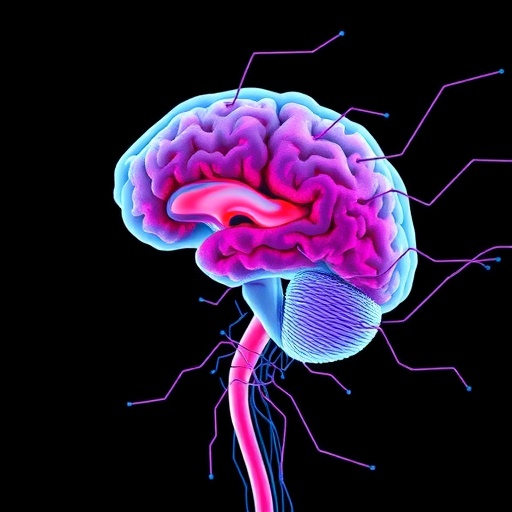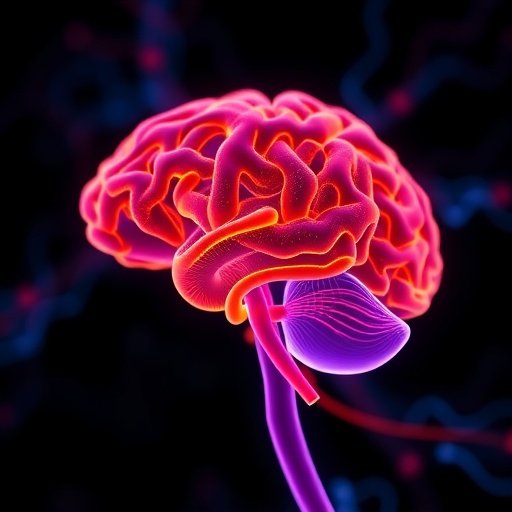In a groundbreaking new study published in Nature Neuroscience, researchers have uncovered a critical vascular mechanism contributing to the neurological decline associated with aging. The research sheds light on how impaired drainage at the microvascular level—specifically within capillary-to-venous transitions—can lead to pathological changes in brain white matter, including gliosis and demyelination. These findings present a significant advance in our understanding of brain aging and could pave the way for novel interventions aimed at preserving white matter integrity and cognitive function in the elderly.
The research team, led by Stamenkovic and colleagues, employed sophisticated imaging techniques alongside molecular and histological analyses to investigate the capillary-venous interface in the white matter of aging mice. Their results revealed a striking impairment in the drainage capacity of capillary-to-venous pathways during aging, which disrupted the efficient clearance of metabolic waste and extracellular fluid. This disruption played a pivotal role in fostering an environment conducive to gliosis, the reactive proliferation of glial cells, and demyelination, the degradation of the protective myelin sheath around axons.
.adsslot_Q4Tha8kriR{ width:728px !important; height:90px !important; }
@media (max-width:1199px) { .adsslot_Q4Tha8kriR{ width:468px !important; height:60px !important; } }
@media (max-width:767px) { .adsslot_Q4Tha8kriR{ width:320px !important; height:50px !important; } }
ADVERTISEMENT
Mechanistically, the impaired drainage appeared to induce local hypoxia and inflammation by allowing the accumulation of metabolic byproducts and immune signaling molecules. These pathological conditions triggered astrocytic activation and microglial responses that contribute to white matter degeneration. Importantly, these vascular changes were not merely secondary effects of white matter injury but preceded the onset of gliosis and demyelination, implicating capillary-venous drainage dysfunction as a primary driver of white matter pathology in aging.
One of the most compelling aspects of this study is its detailed characterization of the microvascular dynamics at play. Utilizing high-resolution intravital microscopy and advanced tracer studies, the authors demonstrated that age-related vascular stiffening and endothelial cell dysfunction compromise the fine-tuned fluid exchange and waste clearance at the venous end of the capillary bed. This failure is likely exacerbated by altered perivascular drainage routes, which in young healthy brains serve as essential conduits for removing neurotoxic substances.
The implications of these findings are substantial when viewed in the broader context of brain aging research. Traditionally, attention has centered on neuronal loss and synaptic dysfunction as primary culprits in age-associated cognitive decline. This study challenges that paradigm by underscoring the critical influence of vascular health and microcirculatory clearance in maintaining white matter integrity. It suggests that therapeutic strategies which target enhancement of capillary-venous drainage or amelioration of vascular stiffness could mitigate or delay pathological cascades leading to gliosis and myelin loss.
Furthermore, the research opens new avenues for exploring how systemic vascular conditions, such as hypertension or diabetes, which are known to impair microvascular function, might accelerate white matter degeneration through similar mechanisms. The convergence of vascular pathology and neuroinflammation highlights the necessity of an integrative approach in addressing age-related brain dysfunctions, blending vascular biology, neuroimmunology, and glial cell biology.
The study also raises important questions regarding the potential reversibility of these vascular impairments and their downstream consequences. While gliosis and demyelination have traditionally been viewed as largely irreversible processes, the identification of vascular drainage as a modifiable upstream factor offers hope that early interventions could preserve white matter structure and function. Future research may focus on identifying pharmacological agents or lifestyle modifications—such as exercise, diet, or vascular-protective compounds—that enhance capillary-venous drainage capacity.
Moreover, the detailed vascular imaging and quantification methods outlined in the study represent significant methodological advances that can be applied to other models of neurovascular health and disease. This technological progress paves the way for longitudinal studies that track the progression of microvascular changes and white matter pathology across the lifespan and in various pathological conditions.
At the molecular level, the team identified key changes in endothelial cell signaling pathways, including dysregulation of nitric oxide synthase and altered expression of extracellular matrix components, which likely contribute to the vascular stiffening and impaired fluid dynamics observed. These molecular insights provide promising targets for drug development aimed at restoring vascular compliance and drainage function in aging brains.
Importantly, the findings emphasize the concept of brain aging as a multifactorial process wherein vascular, glial, and neural elements interact in complex and dynamic ways. This holistic perspective encourages the neuroscience community to rethink current models and therapeutic approaches, integrating vascular health as a central pillar of brain maintenance strategies.
The study’s focus on white matter—a relatively understudied brain compartment compared to gray matter—also highlights the need to expand research efforts beyond neuronal cell bodies and synapses. White matter changes are increasingly recognized as major contributors to cognitive aging and dementia risk, and this study provides a vital mechanistic link tying microvascular dysfunction to these alterations.
Clinically, the translation of these findings could enhance the development of diagnostic tools that detect early vascular drainage impairments, perhaps through advanced imaging modalities or biomarkers reflecting microvascular health. Early identification of individuals at risk for white matter degeneration might enable timely interventions to prevent or slow cognitive decline.
In conclusion, Stamenkovic and colleagues’ study represents a major leap forward in unraveling the vascular underpinnings of white matter aging. By elucidating how impaired capillary-to-venous drainage fosters gliosis and demyelination, the research not only enriches our fundamental understanding of brain aging but also offers promising directions for future clinical and therapeutic innovations. As the population ages worldwide, such insights are critical for combating age-related neurological decline and improving quality of life for older adults.
Subject of Research: Aging-related microvascular dysfunction and its effects on white matter pathology
Article Title: Impaired capillary–venous drainage contributes to gliosis and demyelination in mouse white matter during aging
Article References:
Stamenkovic, S., Schmid, F., Gurler, G. et al. Impaired capillary–venous drainage contributes to gliosis and demyelination in mouse white matter during aging. Nat Neurosci (2025). https://doi.org/10.1038/s41593-025-02023-z
Image Credits: AI Generated
Tags: advanced imaging techniques in neurosciencebiological mechanisms of white matter changescapillary-to-venous transitionscognitive function preservation strategiesgliosis and demyelination in aging brainimpaired drainage in white matterneurodegenerative diseases and agingneurological decline in elderlypreserving brain integrity in elderlyvascular drainage system in brain healthvascular mechanisms of brain agingwhite matter lesions and neuroimaging




